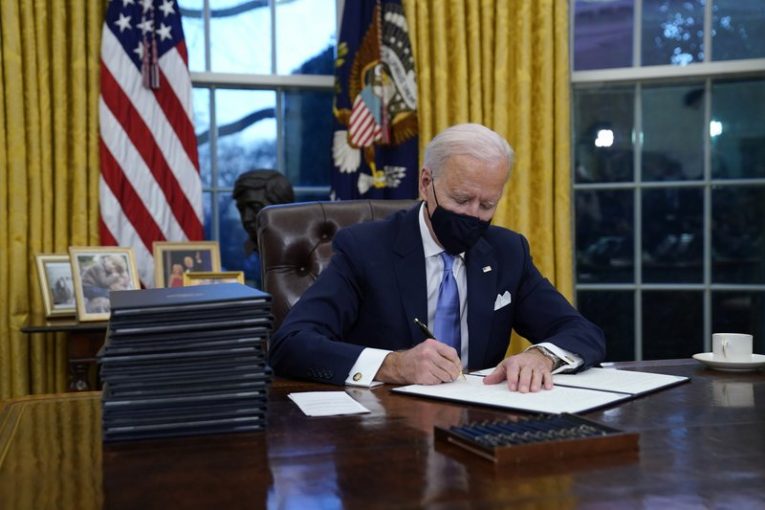

By Jacob Vito
President Joe Biden has now unveiled his administration’s foreign policy goal, as reported by the New York Times. Though the strokes remained broad, speaking on worldly responses on climate change to plans against terrorism, one focus stood out among all the talking points: China.
Over recent years China has grown to be a superpower, rivaling political mainstays like the United States and European Union. This shift has occurred rapidly, the country quickly expanding its economy into having the world’s second-largest GDP.
However, the nation’s expansion is no longer something focused inward. Instead, China has increasingly moved to expand its foreign power. Though the Biden administration would not get into the specific moves it would take against Chinese president Xi Jinping’s government, a level of concern over American influence that has not been seen since the Cold War has arisen in the White House.
However, to understand China’s role in the world, it’s first important to look at what they’ve done to get where they are.
The Belt and Road Initiative is perhaps the most important exertion of foreign power seen in decades. To put it briefly, a series of infrastructure and development investments given by the Chinese government to smaller nations worldwide. And though it is a far cry from the military actions that America uses to show foreign power, it buys China something essential: influence.
China’s investments give the country favorable relations with potential allies and can non-confrontationally weaken its enemies. Such moves can already be seen in India, as Pakistan and Sri Lanka’s deals with China have applied pressure to the country’s contested border with China, as the South China Morning Post notes.
And as much as they might like to, the Biden Administration, or any administration for that matter, has little chance of outcompeting China in these regards. And why? To put it bluntly, America forgot how to use its own foreign power.
Following the second World War, America began what it called the “McArthur Plan.” The goal was to provide investment into ravaged European economies while making them more open to cooperation from the United States. The plan worked and helped establish the backbone of relations that would form key 20th-century organizations like NATO. The U.S. has taken steps like the Belt and Road Initiative in the past and found success. Now, China is simply following in our footsteps.
However, in this wave of foreign-power grabs, the U.S. seemed to miss the memo. While the U.S. rested on its laurels of worldwide recognition, China quickly built its worldwide reputation through investments and deals. And by the time the United States realized it had entered another international standoff, we were already on the back foot.
So, where do we go from here? If China has made it off the starting line before us, what response can we have to catch up and compete?
When conversations like these are had, fingers are often pointed at the decline in the American manufacturing center and the outsourcing of harder-labor jobs. Such positions advocate for “bringing jobs back” by offering tax incentives or subsidies for pulling jobs stateside. However, as appealing as the narrative of other countries winning because they took our jobs appears to be, it isn’t really that true.
Though some jobs in the American manufacturing centers of the 20th century certainly went overseas, many stayed here and were automated. As the Federal Reserve Bank of St. Louis notes, realistic models of manufacturing’s share of the U.S. GDP show very little change. Put very simply, the narrative of American manufacturing bleeding jobs overseas and damaging the economy is false.
Instead of creating some fiction about bringing back manufacturing jobs, the United States can reasonably pick one of two options. The first is to try and fight China by leaning into the largest drivers of the American economy today: its financial markets and service sectors. Steps can be taken to bolster these fields better, but China’s rising markets and growing middle class make even these actions less than assured to build financial dominance.
The second option is to acknowledge a rather painful truth and understand that the United States can no longer hold economic superiority on many fronts. It hardly feels nice to acknowledge, but fighting China with the expectation of winning is no longer a tenable position.
The U.S. really can’t “compete” with China like it wants to. Their workforce weighs in at hundreds of millions larger than ours. For decades, their economic growth rates have put ours to shame. This is a losing battle, and though America should still try to cement itself as an important economic figure for the years to come, there will soon come a day when it is eclipsed in influence and power. We’re just going to have to learn how to be second.
So, 你们好, and welcome to the age of Chinese superpower.

Jacob Vito is a first-year Community and Regional Development major at UC Davis. He is from western Pennsylvania.
Support our work – to become a sustaining at $5 – $10- $25 per month hit the link:

A willingness to challenge China (futile as that may ultimately be) is one of the primary reasons that Trump was elected.
In contrast, Russia is not going to rule the world. That competition ended some 30 years ago.
But, it’s difficult to know exactly how China’s rise will impact individuals in the U.S. Hopefully, we won’t even notice. 🙂
By the way, how did the Vanguard get such a reasonable (seemingly non-extreme) author – contributing on a regular basis?
Jacob…you either have the continents, or the name wrong…
You must not be a history major… google ‘McArthur (sic) Plan’, and, ‘Marshall Plan’…